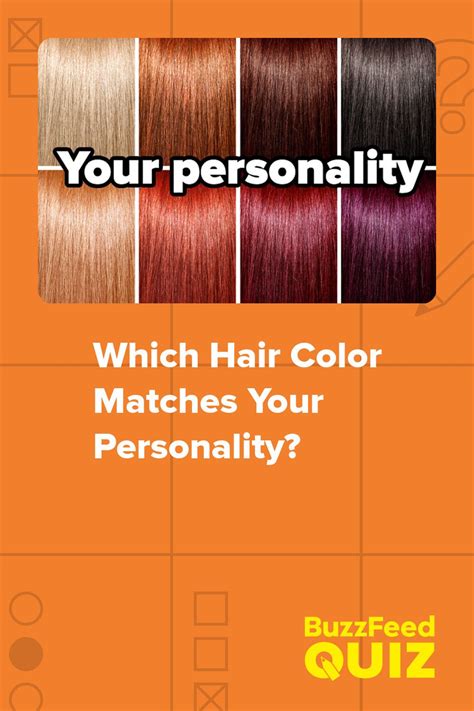Introduction

Your hair is a statement, a reflection of your personality and style. Choosing the right hair color can enhance your features, boost your confidence, and turn heads wherever you go. But with so many colors to choose from, finding your perfect match can be a daunting task. This comprehensive guide will help you navigate the world of hair color and find the shade that makes you shine.
Skin Tone and Hair Color Harmony
The first step in finding your ideal hair color is determining your skin tone. Here are three main categories:
- Cool skin tones: Have pink, rosy, or bluish undertones. Opt for hair colors with ash, blue, or violet tones.
- Warm skin tones: Have yellow, golden, or peachy undertones. Choose hair colors with warm, golden, or copper tones.
- Neutral skin tones: Have a mix of both cool and warm undertones. Can wear a wider range of hair colors.
Eye Color and Hair Color Pairing
Your eye color can also influence your hair color choice. Here are some general guidelines:
- Brown eyes: Complement with warm, golden, or copper hues.
- Blue eyes: Contrast with ash, silver, or blue-black shades.
- Green eyes: Enhance with golden, chestnut, or auburn colors.
- Hazel eyes: Can wear a variety of colors, but warm or golden tones tend to look more flattering.
Facial Features and Hair Color Balance
Consider your facial features when selecting a hair color. Certain shades can highlight or downplay specific features:
- Round face: Avoid colors that are too dark or heavy, as they can make your face appear wider. Opt for lighter, brighter shades.
- Oval face: Can wear almost any hair color, but bold shades like reds or blacks can add drama.
- Square face: Soften angles with warm, rounded colors. Avoid severe or harsh shades.
- Heart-shaped face: Draw attention to your eyes with a color that complements your skin and eye tone.
Natural Hair Color Considerations
If you’re considering a hair color change, it’s essential to consider your natural hair color. Drastic changes may require multiple bleaching processes, which can damage your hair. Here are some tips:
- Dark hair: Can transform into lighter colors, but requires significant bleaching.
- Light hair: Can be easily dyed a variety of colors without harsh bleaching.
- Gray hair: Can be covered with permanent dyes, but may require multiple applications.
Hair Color Trends for 2023 and Beyond
Keep up with the latest hair color trends to stay on top of style. Some popular options for 2023 include:
- Bronde: A blend of blonde and brown hues that creates a rich, warm look.
- Rooty blonde: A blonde shade with darker roots that adds depth and dimension.
- Chocolate cherry: A deep, rich brown with slight reddish undertones.
- Coral blush: A pastel pink shade that adds a touch of whimsy.
Common Mistakes to Avoid
- Choosing a color that is too extreme: Avoid drastic changes that don’t complement your skin tone or features.
- Not considering your natural hair color: Over-processing your hair to achieve a drastic color change can damage its health.
- Using harsh chemicals: Opt for professional dyes that minimize damage to your hair.
- Ignoring maintenance: Hair color requires upkeep to maintain its vibrancy and prevent fading.
Pros and Cons of Different Hair Color Techniques
Highlights
- Pros: Adds dimension and texture to hair. Can brighten your face and draw attention to your eyes.
- Cons: Can be time-consuming and expensive. May damage hair if not applied correctly.
Ombré
- Pros: Creates a gradual transition from dark roots to lighter ends. Gives the illusion of volume.
- Cons: Can be difficult to maintain. May require frequent touch-ups.
Balayage
- Pros: A hand-painted technique that creates a natural, sun-kissed look. Blends well with natural hair color.
- Cons: Can be time-consuming. May not provide enough coverage for gray hair.
Color Melting
- Pros: Blends multiple shades into each other seamlessly. Creates a multi-dimensional, high-impact look.
- Cons: Can be expensive. Requires skilled application to avoid brassiness.
FAQs
1. How often should I touch up my hair color?
Every 4-8 weeks, depending on the technique and your natural hair growth rate.
2. Can I color my hair at home?
Yes, but it’s recommended to consult a professional stylist for the best results and to avoid damage.
3. What are some ways to maintain my hair color vibrancy?
Use color-protecting shampoos and conditioners, limit washing, and avoid heat styling.
4. How can I prevent hair damage during coloring?
Choose gentle dyes, use a bond protector during the process, and deep condition your hair regularly.
5. What are the latest hair color innovations?
pH-balanced dyes that minimize hair damage, semi-permanent dyes that last for several washes, and tone-on-tone dyes that enhance natural hair color without drastic changes.
6. How can I experiment with hair color without damaging my hair?
Use temporary hair color rinses or sprays that wash out easily.
Conclusion
Finding your perfect hair color match is a personal journey that requires consideration of various factors. By understanding your skin tone, eye color, facial features, and natural hair color, you can choose a shade that complements your unique beauty. Embrace the power of hair color to transform your look, boost your confidence, and make a statement that stands out. Experiment, explore, and find the color that makes you feel like your most radiant self.
